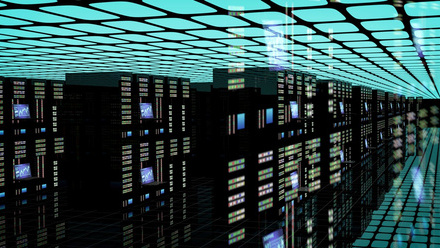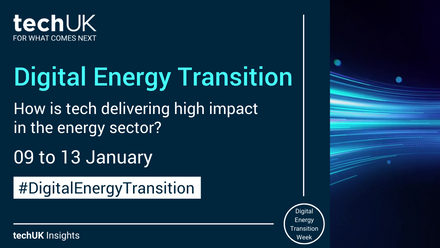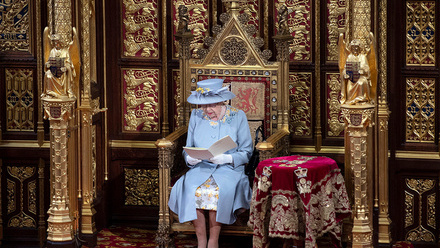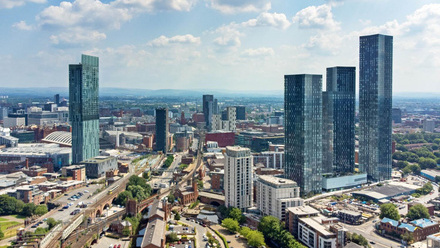Digital Twins and Sustainability
It’s now generally accepted that climate change is an inescapable challenge. Our collective demands on nature and our shared shortsightedness about the impact we have on the planet have brought us to a tipping point. We recognise the importance of limiting global warming to 1.5C, but we also recognised just how much more we have to do in order to achieve that. That target implies profound changes to the way many of us live our lives, and ensuring a 'just transition’ from the old energy ecosystem to a new one will require systemic changes.
At the same time, we are not starting from scratch, and we have in place many assets and systems which could – if used wisely – take us towards initial targets of Net Zero carbon emissions and onwards in a balanced circular economy that also addresses plastic and toxic waste, clean water, and clean air.
We also have rapidly accelerating technologies that can help us: the uptake of both solar power and electric vehicles is surpassing predictions; and we have greater access to more data about the distribution of energy and the connectivity of supply chains than ever before. If we can work out how to use it, Artificial Intelligence has the potential to make more sense of complex relationships in large data sets faster than ever before, and difficult optimisations can be resolved far more quickly and accurately using quantum-adjacent technologies.
So how can we apply these new technologies to old systems, so that we can accelerate our pace of change?
Digital Twinning is one example of such an application.
A digital twin is a combination of a real-world system and a digital model of it, connected as far as possible in real time so that the model is always accurate. In their simplest forms, these models have been widely used for decades, but advances in sensor technology, data management, computing power and visualisation have revolutionised their impact. It is possible to see, and understand, whole networks of pumps, pipes, switches, cables, and consumers in greater detail and fidelity than ever before.
What this means is that we may be able to give our existing infrastructure a new lease of life, and allow it to help carry us through the coming energy transition. And that means that we can start making the necessary changes now, without having to wait for new national-scale infrastructure projects, and without radical end-to-end changes.
The energy transition means that every existing utility is facing changes that are sufficiently transformational as to be existential, and facing the need to change fast. At the same time, each is managing a real operating system of infrastructure; and this infrastructure is what we have to start working with, today.
Can that infrastructure meet the challenge of at least the first stages of the energy transition? The answer seems to be ‘very possibly’ – if it can managed with greater acuity than is currently possible.
Gas distribution moved in the 1970’s from ‘town gas’ – locally produced from heating coal – to ‘natural gas’ – Methane - extracted from gas fields under the North Sea. That transition took a decade, and it was a further few years before a fully functioning market in gas pricing settled down. We don’t have that long to make a move away from a carbon-releasing fuel supply to a carbon-neutral one.
The industry is closely examining the potential of hydrogen and ammonia as alternative gases that can store and carry energy, and at what changes would need to be made to the existing infrastructure to allow them to do so. This includes re-opening strategic underground storage facilities, testing networks, assessing safety, and considering the design of certification and markets in different forms of hydrogen based on how it is generated.
There are many challenges – one of which is the need to manage the distribution network much more frequently in order to balance supply and demand, as Hydrogen flows much more quickly than Methane. Existing operational control centres and network instrumentation will need to be upgraded with more, and more accurate, sensors, as well as new ways to calculate the most optimal network configuration for delivery. Two-way flow – envisaged by some analysts as a part of the Hydrogen eco-system – will also make management more complicated.
This upgrade meets all the criteria to be a step up in the maturity of the Digital Twin of gas networks.
In parallel, this step will make significant demands on the water network. Electrolysis of water for Hydrogen currently needs clean water in large quantities, and until we can electrolyse sea water effectively, there will be additional demands on the water network. As well as ensuring it is optimally managed, faster and more accurate leak detection is going to be essential. The latest generation of sensors can be retrofitted to existing pipework and can accurately pinpoint leaks at further distances – but this generates a significant data collection and visualisation problem. Again, the solution to this problem looks like a Digital Twin for water; more sensors, more data, smarter models.
The electricity distribution grid, designed for a single source delivering to a stable portfolio of consumers, is not well-configured for domestic production and the demands of electric vehicles. At the same time, people are beginning to realise that these vehicles are themselves carrying electricity from one place to another, and to explore the opportunities that represents. Again, as a complex system beginning to be used in new ways, the way that that system is measured, visualised, understood and controlled all lends itself to a Digital Twinning approach.
None of this is guaranteed, but the climate crisis is not one to be tackled piecemeal. It has, surely, to be a case of ‘this and this’ rather than ‘this or that’ – and, frankly, if we can’t repurpose this national infrastructure one has to ask what is going to happen to it. Digital Twins look like a sound starting point to better understanding what we have today, and how we can use it as we set off into the journey into tomorrow.
|
To find out more about how digital twins can support decision making across a range of sectors, watch Jason’s short explainer, recorded at Fujitsu’s last ‘Nova’ series event, exploring the impact of innovation on the UK economy:
|
Digital Twins updates
Sign-up to receive updates on techUK’s work around supporting the adoption of digital twin technology throughout our economy. You’ll receive regular insights, policy updates, event invitations and projects you can get involved with.
Smart Infrastructure and Systems updates
Sign-up to get the latest updates and opportunities from our Smart Infrastructure and Systems programme.








